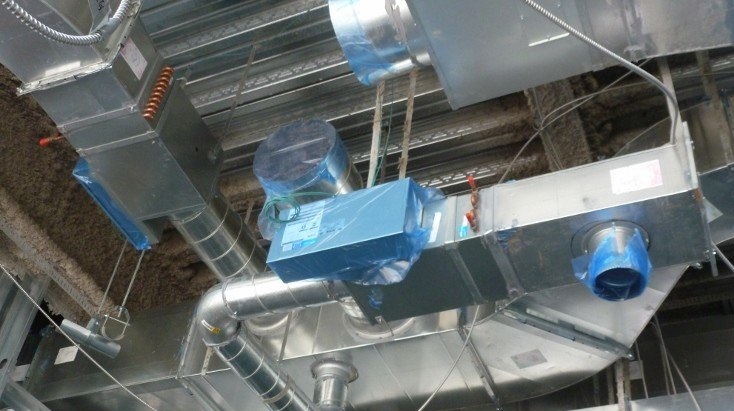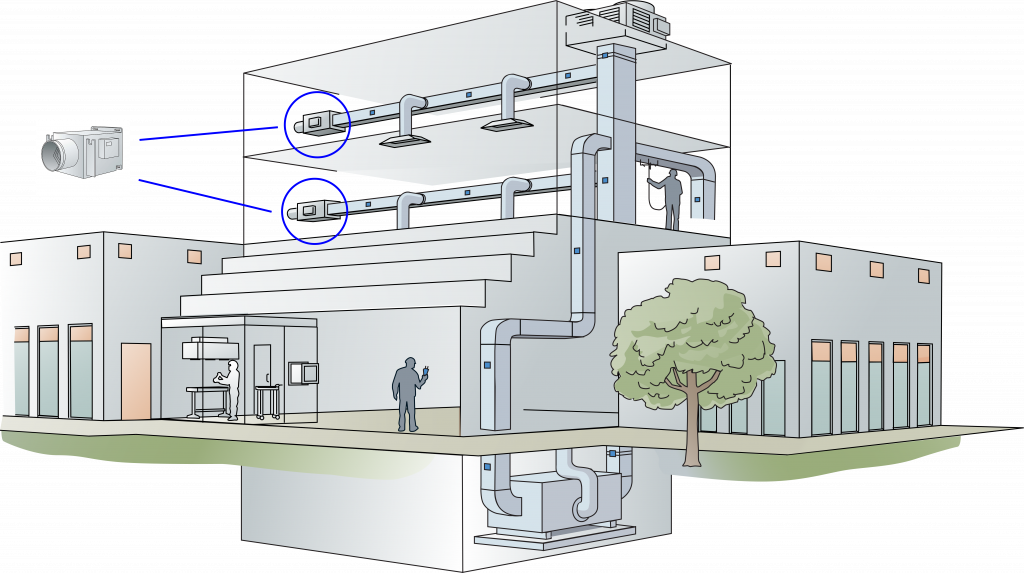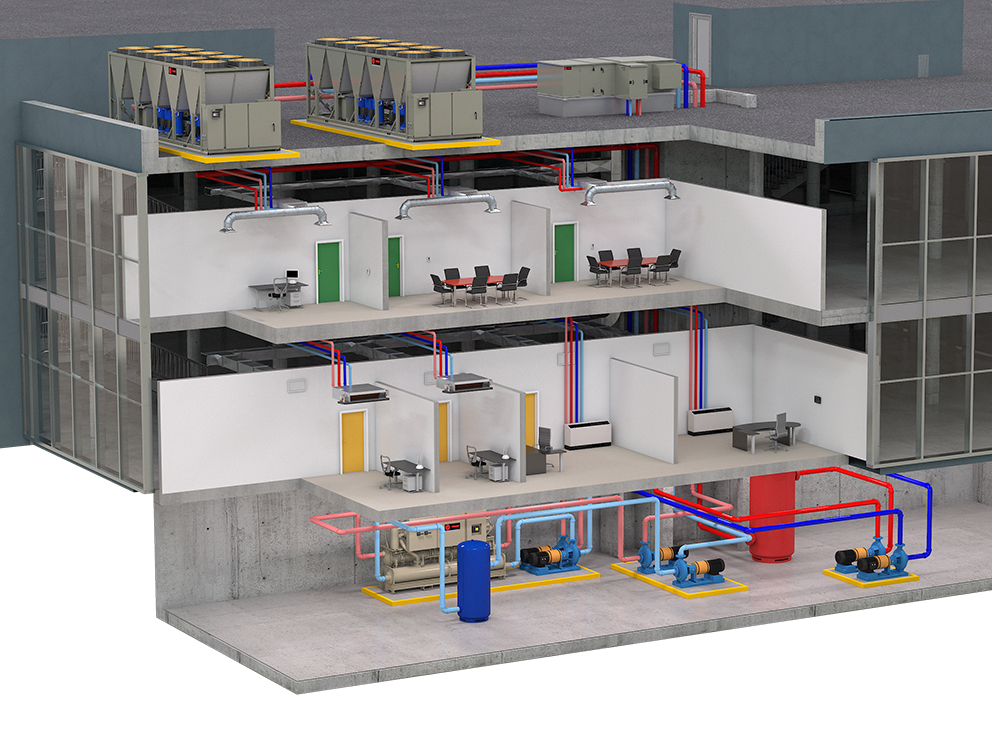VAV vs CAV
Ventilation System
Ventilation System Comparison: Constant Air Volume (CAV) and Variable Air Volume (VAV)



The Ventilation Systems consume less energy than space heating or air conditioning equipment, they affect the amount of air that must be heated or cooled in the first place.
The Ventilation systems can be classified into constant air volume (CAV) and variable air volume (VAV) systems, and this article will compare both types.
v CAV systems supply a constant airflow at variable temperature.
v VAV systems supply a variable airflow at constant temperature.
CAV systems are less expensive and simpler to design and install, whereas VAV systems proposal superior performance and energy savings for a higher upfront cost. In most cases, VAV ventilation the best option because long-term energy savings far outweigh the additional system cost.
However, there are applications where the ventilation load shows little variation, and CAV is recommended because the added features of VAV are rarely used.
Constant Air Volume (CAV) Ventilation
CAV systems are well-matched for applications where the ventilation load is constant for longer periods of time. Warehouses, call
centers and manufacturing facilities that operate 24/7 are good examples of where CAV can be deployed effectively – these are facilities where the number of occupants and ventilation requirements show almost no variation. CAV ventilation can also be used in concert halls or other event venues that are used sporadically but with a predictable occupancy – the system always operates at rated airflow, but only when the facility is being used.
CAV Benefits
CAV systems are older but remain viable ways to manage HVAC needs. Benefits include:
- Simple design
- Easy Installation
- Lower up-front Installation Costs
- Ideal for single zone applications
CAV Drawbacks
However, the simplicity of CAV System cuts both ways, making it less ideal for more extensive HVAC needs.
- Provides only fixed volume airflow
- Limited options (such as manual dampers) for zone-level air flow adjustment and adaptability
- Lower energy efficiency overall
- Poor humidity control
Variable Air Volume (VAV) Ventilation
VAV systems offer superior performance in any application where ventilation equipment is subject to frequent part-load conditions. This describes the vast majority of commercial spaces, where occupant load is random and constantly changing.
VAV systems should not be confused with demand-controlled ventilation (DCV). While related, the concepts are not equivalent: DCV consists on adjusting ventilation automatically in response to occupancy, while a VAV system allows variable airflow but control can be manual. In fact, demand-controlled ventilation can also be used in CAV systems if airflow is controlled based on occupancy, even if ventilation equipment always operates at 100% capacity when active.
In addition to energy efficiency, a VAV system provides superior control over temperature and humidity. Equipment also lasts longer because it is not subject to frequent switching, like equipment using ON-OFF controls in CAV ventilation systems.
VAV systems depend on two main elements to operate:
VAV boxes, which adjust airflow for individual zones using dampers. Fan speed controls. Variable-frequency drives (VFD) are normally used for fan motors above 1 hp, while electronically commutated motors (ECM) offer built-in speed control in fractional horsepower applications.
VAV boxes open or close the air damper automatically in response to the air temperature of the zone they serve. They are useful when the VAV system serves multiple zones with different HVAC requirements. However, in single-zone systems, a VAV box wastes energy by restricting airflow; in a single-zone system, fan speed controls can provide variable airflow with no need to use a VAV box.
Operating conditions are different from multi-zone systems, where the combination of fan speed controls and VAV boxes achieves the best performance.
The VAV box for the zone with the highest airflow requirement is fully open to avoid wasting energy as pressure loss across the air damper.
Other VAV boxes are opened partially as required by the zones they serve.
Fan speed is controlled so that total airflow meets the combined demand of all zones (the fully open VAV box plus all other partially-open boxes).
In buildings where ventilation load is variable, VAV systems typically offer energy savings above 30% compared with CAV systems.
The best recommendation is to get professional assistance: if you work with qualified design engineers, they can determine the ventilation system configuration that works best in your building, while ensuring it is properly designed.
VAV Benefits
As the newer of the two HVAC options, VAV offers distinct benefits for commercial buildings, which include :
- Better control over airflow, temperature, and humidity
- Multi-zone conditioning through built-in dampers
- More cost-effective ventilation overall – less fan power is needed to maintain each climate zone
VAV Drawbacks
Although VAV offers big benefits to HVAC efficiency, this type of system comes with drawbacks such as:
- More complicated infrastructure design that leverages more advanced fan controls and dampers
- Higher up-front costs than CAV installations
Despite its drawbacks, note that these up-front costs tend to be offset by the lower operating costs of the system itself.

